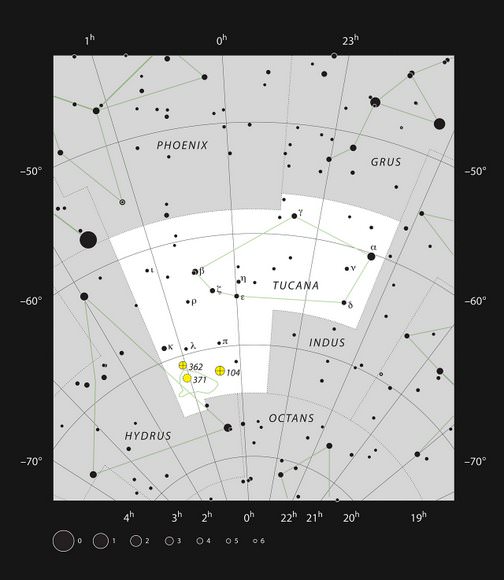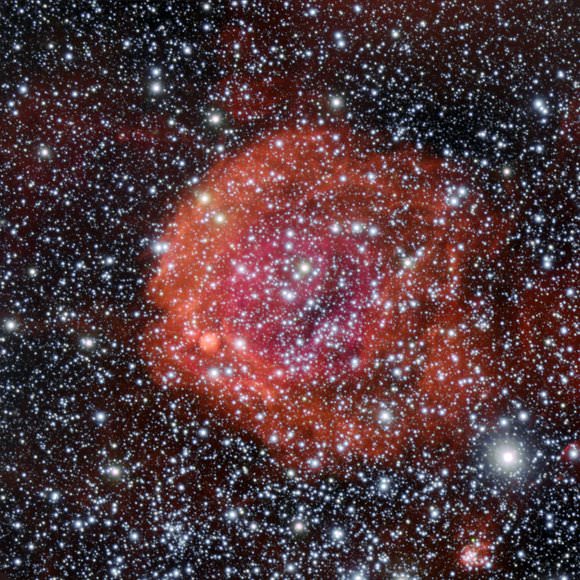[/caption]
Just in time for the start of spring, the ESO’s Very Large Telescope has captured this stunning new image of a region of glowing hydrogen surrounding the star cluster NGC 371.
Regions of ionized hydrogen like this one — known as HII regions — are exploding with the births of new stars. NGC 371 lies in our neighboring galaxy, the Small Magellanic Cloud. It’s an example of an open cluster; its stars all originate from the same diffuse HII region, and over time the majority of the hydrogen is used up by star formation — leaving behind a shell of hydrogen such as the one in this image, along with a cluster of hot young stars.

The Small Magellanic Cloud is a dwarf galaxy just 200,000 light-years away, which makes it one of the closest galaxies to the Milky Way. It contains stars at all stages of their evolution, from the highly luminous young stars found in NGC 371 to supernova remnants of dead stars. These energetic youngsters emit copious amounts of ultraviolet radiation causing surrounding gas, such as leftover hydrogen from their parent nebula, to light up with a colorful glow that extends for hundreds of light-years in every direction.
Open clusters are common; there are numerous examples in our own Milky Way. However, NGC 371 is of particular interest due to the unexpectedly large population of variable stars — stars that change in brightness over time. A particularly interesting type of variable star, known as slowly pulsating B stars, can also be used to study the interior of stars through asteroseismology, and several of these have been confirmed in this cluster. Asteroseismology is the study of the internal structure of pulsating stars by looking at the different frequencies at which they oscillate.
Variable stars play a pivotal role in astronomy: some types are invaluable for determining distances to far-off galaxies and the age of the Universe.
The data for this image were selected from the ESO archive by Manu Mejias as part of the Hidden Treasures competition, which invited amateur astronomer to search through ESO’s archives in hopes of finding a well-hidden gem. Three of Mejias’s images made the top 20. His picture of NGC 371 was ranked sixth in the competition.
Source: ESO press release.

